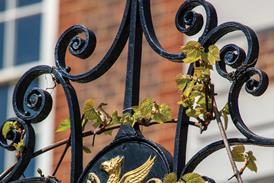In the first of a new regular wine column, Will Lyons explains why France is back in vogue
The reputation of France as a wine-producing country is riddled in paradox. On the one hand the position of its triumvirate of fine wine regions, Bordeaux, Burgundy and Champagne, has never been so secure.
Prices and demand are soaring. In the past few months, France has introduced the world to the most expensive sparkling wine: Champagne Krug’s Clos d’Ambonnay 1995, which is currently retailing for around £2,000 a bottle.
Such is the confidence among the Champenois that their industry is recession proof they have agreed in principle to extend the territory where champagne grapes can be grown. The great conglomerates that control the Champagne houses are looking towards the long-term.
Meanwhile, the Bordelais have released their latest vintage. Despite the mixed quality of the 2007 vintage, prices have remained on a steep upward curve. Saint Emilion’s Château Ausone is presently trading at more than £5,000 a case, while Château Lynch Bages 2007, a fifth growth from Bordeaux’s left bank (still affectionately referred to among British wine circles as lunch bags) is selling for £395 a case or £32 a bottle. At these prices, I suspect even Rumpole would be priced out of ordering his favourite house claret at Pomeroy’s Wine Bar.
And yet, at the other end of the spectrum, France’s reputation has suffered a decade of scepticism. Once the engine room for Britain’s insatiable appetite for everyday plonk, the vignerons of south-west France lost this mantle to countries such as Australia, Chile and New Zealand more than a decade ago.
In the past few years, a slow realisation that vast swathes of land under vine will have to be grubbed up has caused consternation among many who regard wine-producing not so much as a way of life but a government-sponsored right. Things reached a nadir last year when a group from the south’s Languedoc region calling themselves the ‘Crav’, or the Union for Viticultural Action, warned the French government to ‘raise the price of wine or blood will flow.’
But against this background of soaring prices at the top and damaged reputations at the bottom, paradoxically the outlook for French wines has not looked as rosy for decades.
From the pungent, oily, heavily perfumed white wines of Alsace to the big, spicy rounded syrahs of the Rhone, not to mention the light-red wines, bone-dry and sublime sweet whites of the Loire, there is now a feeling that after years of promise France is back.
The reason lies in the near perfect conditions of 2005, when uniformly good wine was made in Bordeaux, Burgundy, Beaujolais, Chablis and the Rhone. Now, after 18 months in the barrel, the wines have been shipped and are making their presence felt on the high street.
In the Rhône Valley the wet spring and dry summer of 2005 has enabled vignerons to produce substantial, rich wines with perfect acidity. Both the north and the south were uniformly good.
In Chateauneuf-du-Pape Domaine du Vieux Telegraphe, Château de Beaucastel, M Chapoutier and Clos des Papes all made stunning wine. In Cote Rotie, Château d'Ampuis and Domaine Jamet are also very good, while Thierry Allemand in Cornas makes chewy, beefy, mouth-filling wines.
But it is the lesser appellations that have come the furthest. This summer there are two regions that really excite. Gascony, or rather the Vin de Pays de Côtes de Gascogne, is a case in point. This rich, fertile pocket of land in the southern most westerly corner of France, littered with lush green fields and carpeted with bright yellow sunflowers, is home to one of the most satisfyingly reliable white wines one can buy in the UK today.
What I like about these wines are their character and how well they accompany the various local cuisine such as foie gras, confit de canard and magret de canard. Principally, I found the whites possessed an attractive sharp, electrifying energy with plenty of crisp acidity and grassy ripeness and all for around the £5 mark.
Most sommeliers however will tell you that in the case of modern cooking, which can fuse anything from Vietnamese to Thai to traditional French; there is not a wine region in the world that can compete with Alsace for food-friendly and versatile wines. Here, where the vineyards enjoy the longest average hours of sunshine in France and sit on some of the most varied soil, a relative feast of sophisticated, complex, diverse styles are produced. Whether it is chilled Pinot Gris with roast guinea fowl, a glass of late-harvest Gewurztraminer with Munster cheese or an Alsatian Muscat with asparagus, the wines of the sun-baked slopes of Alsace offer delightful companions.
There are a number of producers making great wine in this small ribbon of land that sits on the border of France and Germany. Hugel, Marcel Deiss, Schlumberger, Beyer, Zind-Humbrecht, Trimbach and Domaine Weinbach are all worth looking out for.
Will Lyons is wine correspondent of Scotland on Sunday newspaper
WINES OF THE MONTH
The Naked Grape Sauvignon Blanc 2007After losing its crown to New Zealand in the Sauvignon Blanc stakes, this is just the sort of wine that is attracting oenophiles back to France. Powerful, gutsy, almost New World in style, it is overflowing with grassy, gooseberry flavours. An ideal aperitif that, tasted blind, will surprise your guests.Vin de Pays des Charentes, France £6.16 (Waitrose)
Château Peyrabon 2004While the ’05 vintage ran off with all the headlines, the ’04s have their own charm with perhaps more structure and less obvious fruit than their much- vaunted successor. Peyrabon has improved immeasurably in recent years – this is just the sort of fantastic-value, reliable, decent drinking claret that on-line retailer fromvineyardsdirect excels in finding. A real steal for the price.Haut-Médoc, Cru Bourgeois, Bordeaux, France(www.fromvineyardsdirect.com 020 7490 9910) £11.95
Riesling Grand Cru Schlossberg, Cuvée Ste Catherine 2005Weinbach’s wines are noted for their unparalleled concentration, high acidity, good fruit and luscious mineral character. This wine has incredible energy with an understated nose of peach and lychee and a long, minerally length with a hint of tropical fruits.Domaine Weinbach, Alsace, France (Justerini & Brooks, London, 020 7484 6400) £20



























No comments yet